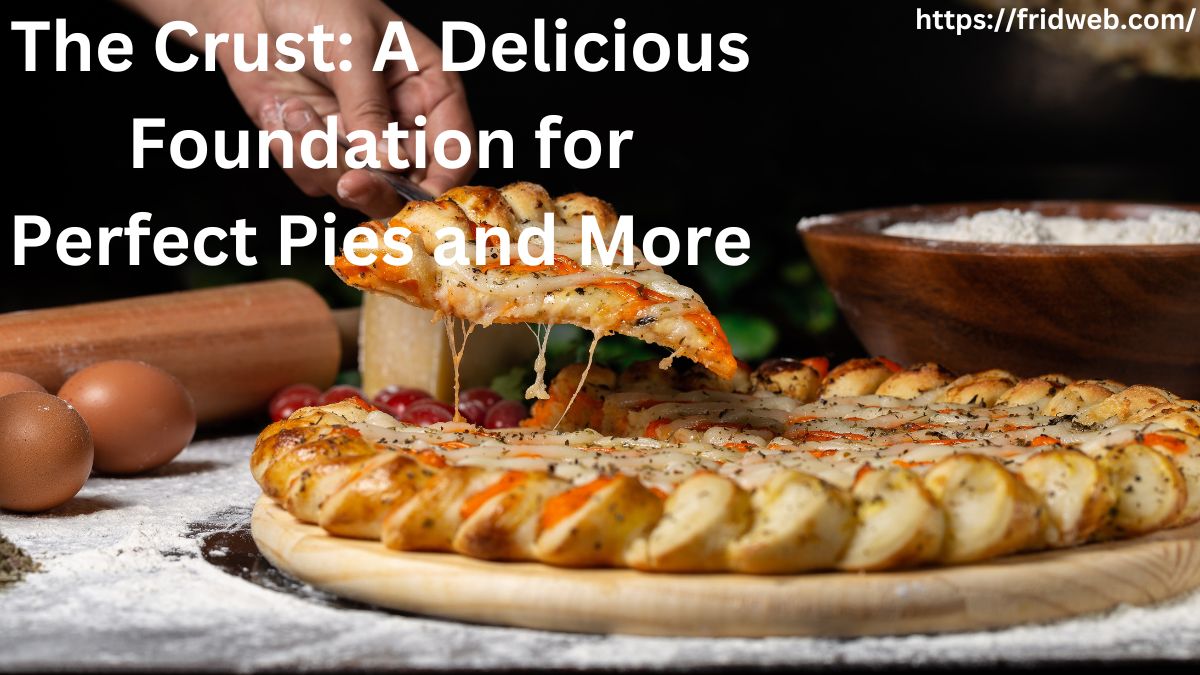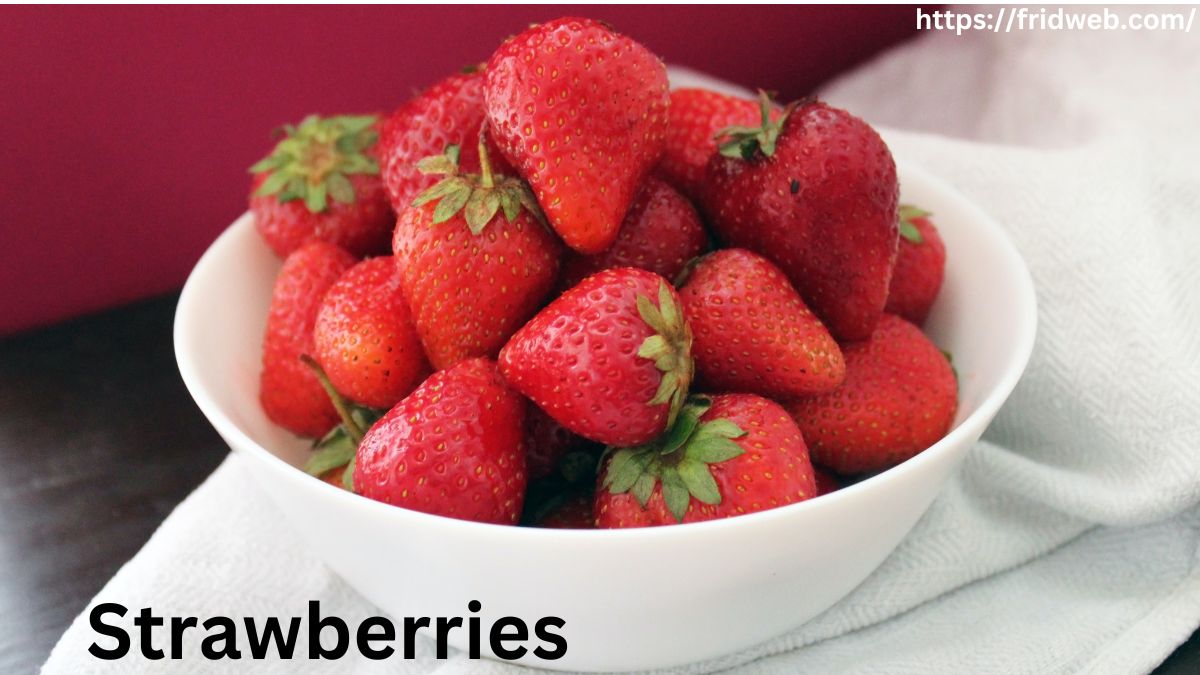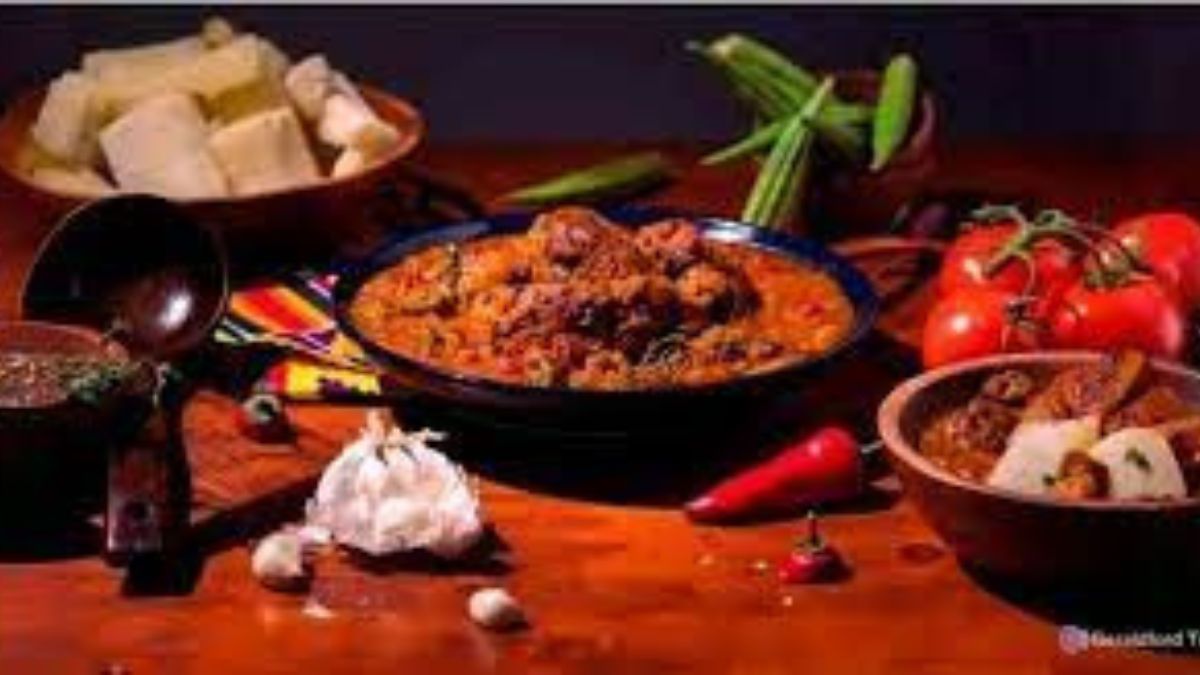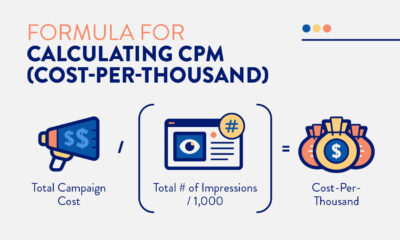Food
The Crust: A Delicious Foundation for Perfect Pies and More

Introduction
There aren’t many culinary treats that can match the delicious scent and flaky texture of a well cooked crust. From classic pies to savoury quiches and even crisp tarts, the crust forms the base for a range of exquisite delicacies. This essay will explore the technique of making a perfect crust that not only tempts the palate but also performs well in search engine results. Whatever your level of culinary experience, whether you’re a seasoned baker or a novice, understanding the art of the crust will unquestionably improve it.
Understanding the Basics of Crust
Prior to getting into the specifics of optimising your crust for search engines, it’s crucial to grasp the fundamentals. The main components of crusts are commonly flour, fat, liquid, and salt. These ingredients combined with the right technique result in a crust that is flaky and delicate.
The fundamental structural component is flour, while the richness and flaky layers are produced by fat (such as butter or shortening). Water or milk, as well as a dash of salt, help to bind the components together while enhancing the flavour.
Crafting a Flawless Crust
Attention to detail is essential to making a crust that not only tempts search engines but also tastes great. Here are some important ideas to bear in mind:
a. Quality and Quantity of Ingredients:
Your crust’s flavour and texture may be improved by using premium components like organic flour and premium butter. Maintaining the proper ratios of flour, fat, and liquid is also crucial. A tough crust may come from overworking the dough.
b. Ideal Method: Use cold, finely chopped fat that has been previously rendered while creating the crust. This enables the dough to develop tiny pockets of fat, giving it a flaky texture. Always chill the dough before rolling it out to prevent excessive gluten formation and maintain the coldness of the fat.
c. Flavour Enhancers: Take into account including flavour enhancers like herbs, spices, or even citrus zest into your crust. These ingredients not only improve the flavour but also help your crust rank higher in search results. To increase SEO, use pertinent keywords in your recipe descriptions.
Perfecting Different Types of Crusts
There are several varieties of crusts, and each has distinct qualities of its own. Let’s examine a few well-liked choices and how to make them search engine friendly:
a. Traditional Pie Crust: The traditional pie crust is a multipurpose favourite. Include targeted keywords in the recipe’s title and description for SEO purposes. To interest readers, think about writing about the lengthy history of pies and their cultural relevance. To help search engines efficiently categorise and index your material, provide pertinent meta tags.
A gluten-free crust recipe may be improved to appeal to a larger audience given the rising demand for gluten-free products. Include terms that discuss dietary choices, health advantages, and substitute flours. The recipe’s searchability will also be improved by mentioning common allergies and offering alternative substitutes.
b. Savoury Crusts: When used in quiches and pot pies, savoury crusts offer a delicious counterpoint to sweet contents. Include keywords in your optimisation for these recipes that draw attention to their adaptability, appropriate settings, and suggested pairings. To draw readers in, use savoury flavour profiles and bring up well-known components.
Conclusion
The quest to crust mastery combines culinary expertise with SEO optimisation. You can make crusts that taste amazing and perform well in search engine results by knowing the fundamentals, employing premium ingredients, and adding flavourings. The crust is the secret to culinary success, whether you’re making a traditional pie, experimenting with gluten-free options, or exploring savoury concoctions. Roll up your sleeves, grab a rolling pin, and get ready to wow your internet audience and taste senses with your crust-making prowess!
Food
Recalled Strawberries: Ensuring Consumer Safety and Trust

The industry as well as consumers may be significantly impacted by recalls of food goods owing to safety concerns. The strawberry business has seen its fair share of difficulties recently, with multiple recalls undermining consumer confidence. This article examines the significance of food safety, the causes of strawberry recalls, and the steps the industry has done to regain customer confidence. Consumers may make educated judgements by being aware of these elements, and strawberry farmers can improve their operations to avoid more recalls.
The Significance of Food Safety
Both consumers and regulatory authorities are extremely concerned about food safety. The concerns of contamination become much more important when it comes to strawberries, which are frequently eaten raw and uncooked. Foodborne infections can cause serious health problems and, in rare circumstances, even death. To guarantee the integrity and safety of food items, authorities rigorously enforce rules and continuously monitor the food manufacturing processes.
Reasons for Strawberry Recalls
There are several reasons for strawberry recalls, including contamination, poor handling, and problematic packaging. Recalls have a variety of common causes, including
- a) Bacterial Contamination: Throughout various production and distribution phases, strawberries may become infected with pathogens like Salmonella or E. coli. Contamination can happen when you come into contact with unclean surfaces, drink polluted water, or wash your hands improperly.
- b) Pesticide Residue: Strawberries may contain dangerous pesticide residues if pesticides are used excessively or improperly during growing. Consumer health may be at danger from high amounts of pesticide residue, which may lead to recalls.
- c) Foreign things: Occasionally, owing to equipment malfunctions or human mistake during processing and packing, strawberries may include foreign things like fragments of plastic or metal. These alien things have the potential to hurt people physically, leading to recalls to stop injuries.
Industry Initiatives to Ensure Safety
The industry has put into place a number of efforts targeted at increasing safety and preventing future events in order to address the issues raised by strawberry recalls. These programmes comprise:
Producers are urged to embrace good agricultural practises (GAPs), which entail taking steps to guarantee secure growing, harvesting, and packing procedures. These procedures include of performing proper handwashing, keeping irrigation systems clean, and routinely assessing and resolving any contamination issues.
- b) Improved Testing and Inspection: To identify and avoid contamination. Strawberry farmers are investing more money in stringent testing and inspection procedures. To detect possible risks and swiftly address them, this entails routinely monitoring and analysing the soil, water, and crops.
- c) Implementing reliable traceability systems makes it possible to quickly identify and isolate tainted batches. Producers can identify the source of contamination and stop the infected fruit from reaching customers by tracing strawberries along the supply chain.
Rebuilding Consumer Trust
After enduring recalls, the strawberry business must focus on regaining customer trust. Transparency and proactive communication are crucial in this process. Producers must promptly and clearly tell consumers of recalls, their reasons, and the efforts taken to avert such situations in the future. Restoring confidence can also be aided by improving consumer education on safe handling and cleaning procedures.
Conclusion
Recalls of strawberries have highlighted how crucial food safety is to the business. Strawberry producers may guarantee the safety and reliability of their goods by addressing the reasons behind these recalls, putting stronger procedures in place. And improving communication with customers. Customers should exercise caution by buying their strawberries from reliable vendors, cleaning them well before eating, and keeping track of any recalls or safety alerts. The strawberry business can reclaim its reputation and deliver healthy and palatable strawberries to the market with the help of growers and consumers working together.
Food
18-Year-Old Tiana’s Sweet Fresh Cookies: A Delightful Journey of Homemade Goodness

Sinking your teeth into a warm, newly baked cookie is a particularly pleasant experience in a world full of pre-packaged snacks and fast meals. Meet 18-Year-Old Tiana’s Sweet Fresh Cookies-tooth enthusiast whose love of baking has inspired a charming trend. Come along as we explore Tiana’s adventure of creating delicious, handcrafted cookies that are winning over taste buds and hearts.
The Genesis of Tiana’s Baking Passion(18-Year-Old Tiana’s Sweet Fresh Cookies)
The Joy of Baking Discovered (H2)
Tiana had a passion for baking at a young age. She tried basic cookie recipes and eventually improved her abilities thanks to her curiosity and a dash of originality.
A Passed-Down Family Custom (H2)
Tiana added her own spin to the time-honoured classics, injecting them with a fresh, youthful attitude, guided by the wisdom of her grandmother’s hidden cookie recipes.
Crafting the Perfect Cookie
The Art of Baking: From Dough to Deliciousness (H2)
Each component is carefully chosen by Tiana, who pays attention to both quality and flavour. Her method calls for the ideal proportions of butter, flour, sugar, and a dash of love.
A Variety of Creative Flavours (H2)
Tiana explores uncharted territory by boldly experimenting with flavours. Enjoy her luscious chocolate-mint treats or indulge in her tart lemon-infused cookies.
How to Create the Perfect Texture in Baking (H2)
Tiana reveals the secret to getting the perfect cookie texture—crisp on the outside, mushy in the middle. A harmonious fusion of flavours and textures is produced by her expert control of baking time and temperature.
Spreading Love, One Cookie at a Time(18-Year-Old Tiana’s Sweet Fresh Cookies)
A Sweet Haven: Tiana’s Cookie Corner (H2)
Tiana’s enthusiasm developed into a little bakery run out of her house. Enter her inviting cookie area, where you’ll be greeted by the scent of freshly made treats.
Cookie customization: Baking Memories (H2)
Tiana’s cookies have the ability to make any celebration, from weddings to birthdays, a special one. Her distinctive flavours and patterns make an enduring impression.
The Ingredients of Success: Perseverance and Community
Overcoming Obstacles (H2)
There have been challenges along Tiana’s journey. She perseveres despite supply shortages and baking mistakes with unshakable determination.
Building a Community That Loves Cookies (H2)
A thriving online cookie enthusiast community has grown thanks to Tiana’s online presence. She gives ambitious bakers the tools they need to make their own cookie magic through courses and interactive sessions.
Conclusion
Tiana’s tale is a good example of the wonder that results when fervour and creativity converge. Her 18-year-old hands transformed the ordinary cookie into a work of art by weaving a tapestry of tastes, textures, and memories. Remember that every bite of Tiana’s cookies contains some of her heart and soul while you enjoy their delicious, fresh goodness.
Frequently Asked Questions (FAQs)
Can Tiana’s cookies be shipped all over the country?
Tiana now provides local shipments, but she is aiming to increase her shipping choices so that she may reach cookie lovers everywhere.
Can I place a special order for a certain occasion?
Absolutely! Tiana enjoys making customized sweets for special events. To discuss your special cookie dreams, contact her.
Are there any options that are vegan or gluten-free?
Tiana is aware of dietary inclinations and limitations. To meet different demands, she provides a variety of gluten-free or vegan cookie options.
How can I discover Tiana’s baking secrets?
Tiana presents live sessions and online lessons where she reveals her baking tips and tricks. Check her websites for updates on upcoming events.
What motivated Tiana to begin her cookie-baking endeavours?
The inspiration for Tiana’s delightful journey was sparked by her grandmother’s cherished dishes and her own love of baking.
Food
Cassasse: Unveiling the Culinary Marvel

The term “cassasse,” which appeals to both seasoned chefs and foodies, refers to more than simply an ingredient; it’s a phenomena in culture. We shall explore the fascinating dimensions, varied applications, and lengthy history of cassasse in this piece, helping to reveal the mysteries of its relevance and appeal.
History of Cassasse
The origins of cassasse can be traced back to prehistoric societies who appreciated its special attributes. Cassasse has developed from prehistoric times to the present, becoming an essential component of many different culinary customs around the globe.
Cassasse in Modern Cuisine
With the ever-changing culinary scene of today, Cassasse has emerged as a major player. Because of its culinary adaptability, mouthwatering recipes that appeal to foodies all over the world have been created.
Nutritional Value of Cassasse
In addition to being delicious, Cassasse has a remarkable nutritional profile. Rich in vital nutrients, it provides health advantages that make it an invaluable supplement to a diet that is well-balanced.
Cassasse in Different Culinary Cultures
Discover the many ways that other cultures use cassasse, and discover regional differences and original dishes that highlight its versatility in gastronomy around the world.
How to Include Cassasse in Your Meal Plan
To help individuals who are excited to try Cassasse in their own kitchens get started, we offer helpful hints and recipes that are suitable for every skill level.
Cassasse’s Impact on Sustainability
Find out how Cassasse supports environmentally friendly methods, encourages mindful eating, and advances sustainability in the food industry.
Difficulties and Debates Encircling Cassasse
Like any culinary marvel, there are some controversy about Cassasse. Handle discussions and environmental issues related to its production and use.
Cassasse: A Culinary Trend or Timeless Ingredient?
Does Cassasse have a timeless appeal or is it just a fad? Examine its appeal at the moment and learn about forecasts for its culinary future.
Cassasse in Popular Media
In the entertainment industry, Cassasse has left its imprint on everything from social media to cookery shows. Learn about its existence on large and small screens as well as the internet buzz it creates.
Interview with a Cassasse Expert
Learn firsthand information from a culinary expert with experience using Cassasse. Discover exclusive advice and suggestions for using this special ingredient in your own recipes.
Cassasse DIY: Growing Your Own
If you’re a green thumb, consider growing cassasse in your own backyard. Learn from the successes of home gardeners who have embraced the joy of producing their own food to find inspiration.
Cassasse Festivals Around the World
Discover the charms of Cassasse by attending events honouring this delectable culinary treasure. Learn about distinctive customs and occasions that highlight the importance of Cassasse culture.
Exploring Cassasse Beyond the Plate
Investigate Cassasse’s influence on art, literature, and other fields to learn about its wider cultural influence. Explore the ways in which this item becomes more than just a culinary ingredient and finds application in other creative fields.
Conclusion
As we get to the end of our investigation of Cassasse, pause to acknowledge the adventure we’ve been on. Cassasse demonstrates that it is more than simply a delectable food item—it is a cultural gem that should be appreciated—from its historical beginnings to its contemporary existence.
FAQ’s
Is Cassasse a common ingredient in everyday cooking?
Because of its distinctive flavour and adaptability, cassasse is becoming more and more popular in regular cooking.
Are there any health concerns associated with consuming Cassasse?
Cassasse is generally seen as a beneficial complement to a balanced diet when used in moderation. Like any cuisine, though, overindulgence should be avoided.
Can I find Cassasse in local grocery stores, or is it a specialty ingredient?
Cassasse is becoming more widely available, with more grocery stores carrying it, but it may still be found in some specialist stores depending on where you live.
What are some beginner-friendly Cassasse recipes for someone new to cooking with this ingredient?
For novices, straightforward recipes such as stir-fries or soups with cassasse infusion are excellent since they let them enjoy the distinctive flavour without being overly complicated.
How can I learn more about the cultural significance of Cassasse in different regions?
Participate in online forums, go to Cassasse festivals, and read cookbooks that delve into the intriguing cultural background of this ingredient.
-

 Fashion7 months ago
Fashion7 months agoHow To Style Earrings for a Night Out
-

 Business2 months ago
Business2 months agoWhat Can You Expect from a High-End London Office Space?
-

 Real Estate1 year ago
Real Estate1 year agoHow to Unlock the Benefits of Real Estate Investment in Pakistan
-

 Tech12 months ago
Tech12 months agoTMIIS Virtual Gateway: Opening New Horizons in Global Connectivity
-

 Digital Marketing2 months ago
Digital Marketing2 months agoHow to calculate CPM in digital marketing?
-

 General2 months ago
General2 months agoUnraveling the Mysteries of “λιβαισ”: A Comprehensive Guide
-

 Lifestyle1 year ago
Lifestyle1 year agoThe New Trend in Home Furnishings Teapoy and Wooden Sitting Stool
-

 Real Estate1 year ago
Real Estate1 year ago5 Common Mistakes to Avoid When Buying Property in Pawleys Island, SC
